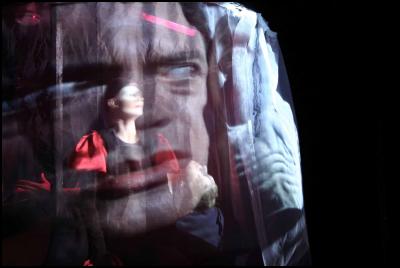Faust Chroma
Faust Chroma

Click to enlarge
See:
Faust_Chroma_Press_Kit.pdf
Synopsis:
Goethe’s Faust is to Germany what Shakespeare’s Hamlet is to the English-speaking world: the greatest play, by the greatest author, creating the greatest national role. Faust is the prototype German character, always striving, never satisfied, who gets seduced into a pact with the devil.
Gustav Gründgens is widely considered the best German actor of all time. He is most famous for playing the role of the devil (Mephistopheles) in productions of Faust that he himself directed. Though he played Mephistopheles, the real-life figure Gründgens had perhaps more in common with Faust, having himself made a pact with the Nazis. Hermann Göring, the designated successor of Hitler, appointed Gründgens as head of all the state-run theatres in the Reich.
In the early ‘60s, Gründgens decided to quit acting and instead “live real life” by travelling the world. His first trip was to Manila, Philippines, where he died suddenly in his hotel room.
Suicide was suspected.
Faust Chroma begins in Manila, 1963, where Gründgens’ fever hallucinations and drug-induced rants awaken scenes from both his theatrical productions and his life.
We see a pre-Nazi cabaret party where Gründgens performs with the daughter and son of author Thomas Mann: one became his wife, the other his lover. We see his early encounters with the Nazis, with Gründgens forced to defend his sexuality and later forced to remarry. We see fantasy scenes from the theatre, love scenes with the wife of Hermann Göring, and Hitler as an admiring audience member.
Theatre and life are mixed up
throughout: Gründgens played roles in both. For Gründgens,
it seems, a decision to quit acting was a decision to quit
living as
well.


 Emirates Team NZ: Statement From Emirates Team NZ On Auckland Hosting Of 38th America’s Cup
Emirates Team NZ: Statement From Emirates Team NZ On Auckland Hosting Of 38th America’s Cup PPTA Te Wehengarua: Draft English Curriculum Lacks Connection With Reality
PPTA Te Wehengarua: Draft English Curriculum Lacks Connection With Reality Oratia Books: Revised Edition Of Much-praised History Examines The Great War Experience Of New Zealand, Australia And Canada
Oratia Books: Revised Edition Of Much-praised History Examines The Great War Experience Of New Zealand, Australia And Canada Brain Injury NZ: Creating Solutions - ID Card For People With Brain Injury Launched
Brain Injury NZ: Creating Solutions - ID Card For People With Brain Injury Launched University of Auckland: AI Leads To Breakthrough In Knee Surgery
University of Auckland: AI Leads To Breakthrough In Knee Surgery The Label: Independent Music NZ Announces Taite Music Prize IMNZ Classic Record 2025
The Label: Independent Music NZ Announces Taite Music Prize IMNZ Classic Record 2025